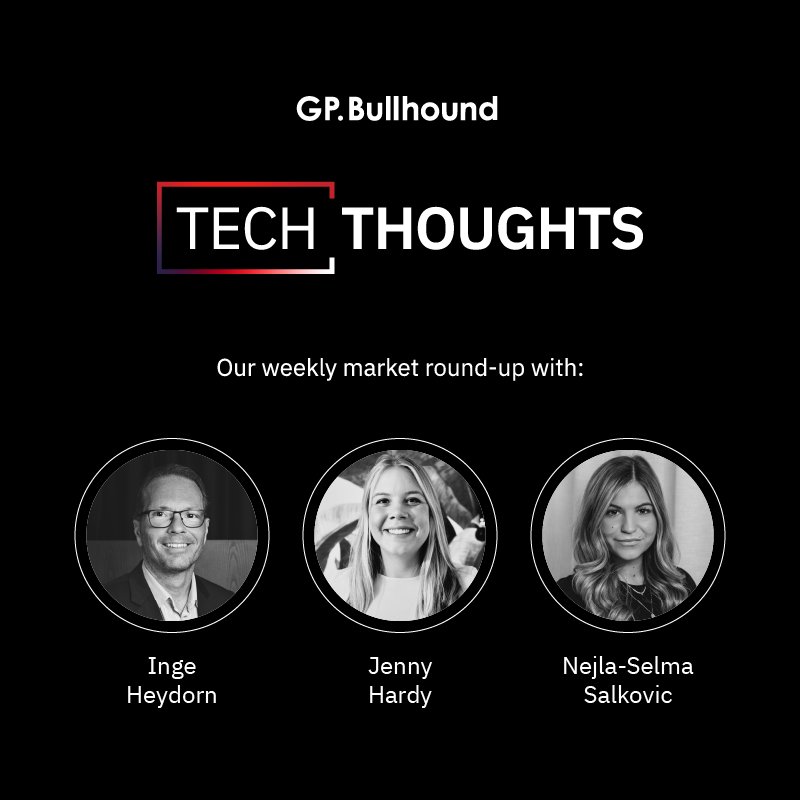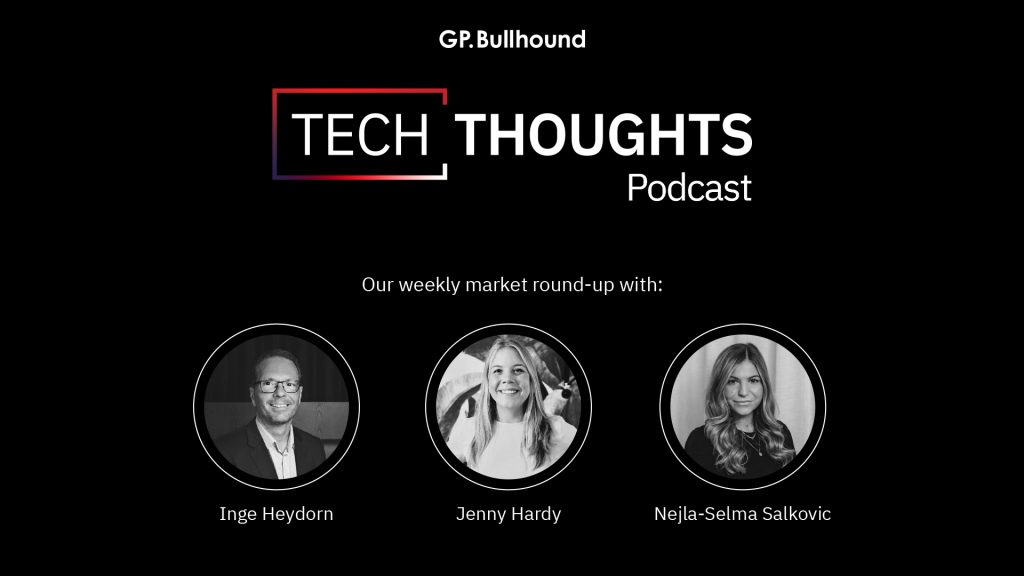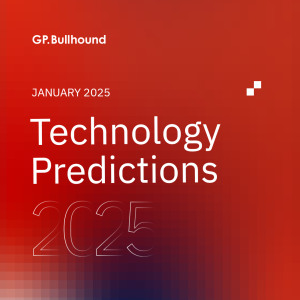Tech Thoughts Newsletter – 25 August 2023.

Market: Rising rates hurt markets and tech again – particularly towards the end of the week, with the market in wait-and-see mode ahead of Jerome Powell’s speech on Friday.
Portfolio: We made no major changes to the portfolio this week.
The biggest thing to talk about in tech this week is Nvidia (owned) results – another blowout quarter exceeding market expectations, and guiding significantly ahead, with management calling out “tremendous demand” for Nvidia’s GPUs for AI platforms.
Of course, the news on demand wasn’t unexpected. We’ve known Nvidia is currently supply-gated – we heard from many companies through Q2 earnings calls that they were waiting on a supply of Nvidia GPUs, which are currently sold out. The cloud hyperscalers have all announced huge AI-driven capex plans, and enterprise software businesses have all added AI capabilities to their offerings, we know every CEO in every industry is trying in some way to either build or gain access to Nvidia GPU capacity.
Our above-consensus view into the quarter (please ask us for our June research note) was focused on what we believed was supply upside coming from node shifts and freed-up capacity at TSMC. We think this, as well as better pricing, largely played out, and see further upside as TSMC continues to build out advanced packaging (CoWoS) capacity.
The earnings call was overall very bullish on supply, demand visibility, and the view that we’re still very early in the innings of this infrastructure shift.
Capacity will increase sequentially each quarter into next year – we think mainly TSMC adding CoWoS capacity, but note as well that Nvidia recently announced its L40S GPU, which doesn’t require advanced packaging and can likely address some unfulfilled demand and accelerate supply in the short term.
Margins also stood out. Pricing was a significant lever (we think particularly in China) – with gross margin beating. Strong top-line growth came with very little opex increase – in Q2, $6.8bn incremental revenue yr/yr came with less than $100m incremental opex – it’s the beauty of Nvidia’s fabless business model.
The longer-term question is: “Is this level of demand sustainable?”
The opportunity was framed by CEO Jensen Huang as $1trn of infrastructure spend ($250bn a year) which needs to shift to accelerated compute (to GPUs, to faster CPUs, to lower latency higher throughput networking equipment) and if you think about Nvidia’s current revenue (its data centre business will be ~$13bn in revenue next quarter) – it’s clear that we’re still in the very early innings of this shift.
On the competitive moat, there is little doubt that Nvidia has the best chips to build on and the best ecosystem to support it. Nvidia has the advantage of its architecture, CUDA – the software ecosystem that sits on top of Nvidia. Writing parallelisable software is much more difficult than writing for CPU – you need to re-engineer everything from the chip to systems to the system software. CUDA gets rid of a lot of the complexity in writing parallelised software and makes it much easier to implement programs that run on Nvidia GPUs. It’s a large part of what has allowed Nvidia to integrate itself into most of the world’s AI frameworks.
And it has an installed base – there are 4 million developers, 3,000 applications, 40 million CUDA downloads, and 15,000 start-ups built on Nvidia. Nvidia has become the de facto standard for software developers around GPUs and accelerated computing – that software and developer ecosystem is a very effective moat (you can make a parallel with Apple’s business model).
What do Nvidia results mean for the rest of the tech industry?
Fundamentally, this set of results gives us more conviction that the AI infrastructure build is an area of the semis market you want to be exposed to, with a long runway of growth and supply constraints that will likely continue to support healthy pricing in the mid-term.
Nvidia’s position as the leader in GPU is clear, but this will also benefit players across the AI value chain. We’ve commented before that the extent to which Nvidia is currently supply-constrained is very helpful for AMD’s (which we own) entry into the GPU space, and there is no doubt that no customer will want to be entirely tied into one powerful provider (it’s no secret that Nvidia chips are very expensive). TSMC make both Nvidia and AMD chips, the networking infrastructure around it (we own Cisco and Arista Networks) and the semicap equipment makers will ultimately benefit – these chips will all be made on advanced nodes.
On to the rest of the results:
Best-in-class software showing growth and profitability
- Palo Alto (owned) reported last Friday night – quite an unusual day to schedule an after-market earnings release which had led to some market speculation as to whether it might include M&A news or management changes. It was just a very solid release, with the addition of new FY26 guidance.
- For us, it’s the standout cyber security stock to own in terms of growth, profitability, and consistency in execution.
- Palo Alto is almost certainly benefitting from spend consolidation. Eight out of 10 top deals included some component of NGS (next-gen security – ie. not simply firewall):
CFOs are scrutinizing deals, which means you have to be better prepared to answer their question and show the business value that you bring to them with your cybersecurity products. We are lucky that we have been focusing on our platform strategy. So we can usually walk in and say, here, you can consolidate the following five, it doesn’t cost you any more, but you get a better outcome and you get a modernized security infrastructure. So from that perspective, that strategy of ours is resonating.”
- They also introduced FY26 guidance, materially above current expectations, expecting billings to grow between 17-19% CAGR (above the 10-15% modelled by consensus); 20% EPS CAGR, and operating margins reaching 28-29% in FY26, from 25% in FY24.
- Workday (owned) reported slightly better Q2 results (the key current RPO showing 23% growth, 2% ahead of consensus) with the Q3 cRPO guide given on the call at 21% vs consensus of 19%. And they are nudging up their FY subscription guidance (again – they did last quarter too) to 18% growth, ahead of current expectations.
- Management is also raising the operating margin guide to 23.5% from 23%, so the trend of enterprise software companies showing better-than-expected leverage continues.
- While there was still talk of deal scrutiny continuing (a new norm?), once again management called out being a beneficiary of spend consolidation:
We haven’t seen any pullback due to the – any macro headwinds in any of the things we’re selling into the market. If anything, I think our value proposition is only resonating more cash as people look to consolidate multiple products who are sometimes called best-of-breed onto best-of-suite platforms. And they’re consolidating on top of Workday for both their financials and their HCM and wrapping our adaptive planning product around both. So we continue to see strong momentum across the board.”
- Elsewhere in enterprise software, Snowflake showed some signs of stabilisation, reporting okay results and, for the first time in three sets of results, not guiding the full year down any further. In May it pointed to optimisation from existing customers holding back spend, deteriorating trends, and newer cohorts taking longer to ramp up consumption. Positively it saw consumption return to growth in May, strength continuing in June and July and commenting that bookings came in above expectations, though some pressure remains as some large customers are renewing at commitment levels lower than current consumption run rates.
Portfolio view: We’ve had a focus in the portfolio on those companies that are benefitting from the current spend consolidation and budget scrutiny. Those scale players that have the ability to offer a full suite of solutions are seeing a higher share of spend as CFOs and CTOs try to cut costs. We’ve also been focused on those software businesses that can show genuine operating leverage. Palo Alto and Workday tick both of those.
Both trade on <40x 2024 EPS – not “cheap” but at a level that compounded EPS growth of 20% can justify.
Snowflake continues to be on our radar but we remain cautious about the low visibility that exists within a consumption business model, high valuation, and still uncertain path to profitability.
Semis – AI and auto remain the only bright spots
- Marvell (owned, small position) reported a solid set of results but more important was its renewed AI revenue targets driving a strong data centre beat and guide.
- Last quarter Marvell indicated that it was on track to doubling its AI-based revenue to $400m in 2023 from demand pull-in on its DSP chipsets, and then doubling again to 2024. Now Marvell is expecting to exit Q4 at a quarterly run rate of $200m – so already at the $800m target.
- Marvell is focused on chips for connectivity across data centres. It makes (alongside other chipsets) DSPs (Digital Signal Processors), which take inputs from the switch ASICs, convert them from analogue to digital and perform operations like signal conditioning, equalisation, error correction, converting those back to analogue and pushing them forward.
- With the scale of data and bandwidth required in AI processing and AI clusters, that requires much higher optics performance, which is driving demand for Marvell’s PAM4 DSP platform (a lot of this directly sitting alongside Nvidia’s H100 and A100 infrastructure).
- Marvell has an additional opportunity around custom silicon (ASICs) as compute engines in AI infrastructure, alongside GPUs. On the call, Marvell commented that it has won several custom silicon programs tied to AI which will start ramping production next year.
- The rest of Marvell’s business was more mixed – carrier, consumer and enterprise storage are all seeing double-digit corrections, though auto/industrial beat and is seeing yr/yr growth.
- Outside of AI, it’s still a very mixed picture for semis – Analog Devices (owned, small position) reported sales down 6% qtr/qtr and guided for next quarter sales down 12% qtr/qtr as it continues to see broad-based inventory corrections. It expects industrial and comms end markets to decline more than auto and consumer (though it is guiding for all end markets to decline qtr/qtr).
- Sunny Optical results reflected the bifurcation between end markets – its handset revenue was down 24% in H1 vs. auto revenue up 43%. Its management team noted still weak demand in the handset market, de-specification and intensifying competition – three reasons to avoid exposure.
- AAC too reported weak results and weak gross margin – same story, weak smartphone, in particular a sharper decline in Android.
Portfolio view: We’ve commented that excluding the bright spots of AI and auto, semis are taking much longer to recover and are experiencing a much worse inventory correction than we might have imagined three months ago. We continue to try to focus the portfolio on the direct and indirect beneficiaries of the AI arms race (as we commented at the start of the letter).
Another turn in the Microsoft/Activision story
- There was a surprising development in the Microsoft/Activision acquisition as Microsoft announced that it would give Ubisoft the cloud streaming rights for all of Activision Blizzard’s existing PC and console games and new games released during the next 15 years.
- It’s part of Microsoft’s efforts to placate the UK and US regulators.
- But for us it’s surprising – we had thought that Microsoft would sell the UK cloud gaming rights but not worldwide. It means that Microsoft will not be able to release Activision titles exclusively on its cloud streaming service.
- While we had always said it made no sense for Microsoft to stop selling games on other console platforms, we had assumed it might want to keep exclusivity on its own Xbox Game Pass subscription service. This will now clearly not be the case, with Ubisoft able to include Call of Duty within Ubisoft+ or indeed any cloud service with a subscription business model.
- Technically, we assume that if it wanted to, Ubisoft could only offer Activision titles on its own subscription model, but for the same reason Microsoft would always have made titles available on a pay-per-title basis to other platforms, it would make no financial sense for Ubisoft not to make Activision titles available to every subscription service.
- The deal does still make sense for Microsoft, though, in that Activision games will be made available for a streaming subscription service, whereas with Activision – an independent entity – they would not. In that sense, it does make a streaming service (Game Pass) that includes Activision games more compelling than without, but it also opens up Game Pass to more compelling competition.
- We think the deal will now be passed given how meaningful the concession Microsoft is making is.
Portfolio view: We own Microsoft, though the gaming business remains a small part of the overall, and the outcome of the case isn’t a factor in our thesis. We think cloud gaming as an alternative (effectively subscription) business model is interesting though – and it could well be Microsoft’s opportunity to build a big consumer business (which again, it has failed to do with Xbox). To the extent that the deal going ahead means that Activision titles will be available via subscription, makes this an increasingly viable business model in gaming.

For enquiries, please contact:
Inge Heydorn, Partner, at inge.heydorn@gpbullhound.com
Jenny Hardy, Portfolio Manager, at jenny.hardy@gpbullhound.com
Nejla-Selma Salkovic, Analyst, at nejla-selma.salkovic@gpbullhound.com
About GP Bullhound
GP Bullhound is a leading technology advisory and investment firm, providing transaction advice and capital to the world’s best entrepreneurs and founders. Founded in 1999 in London and Menlo Park, the firm today has 14 offices spanning Europe, the US and Asia.



